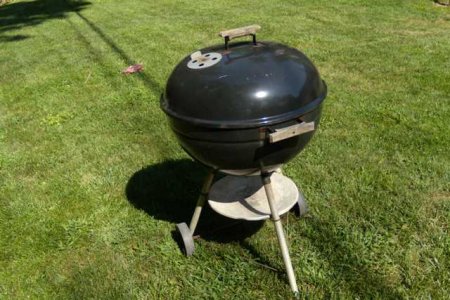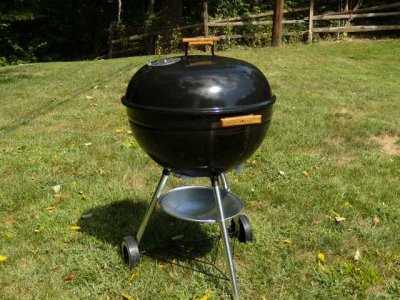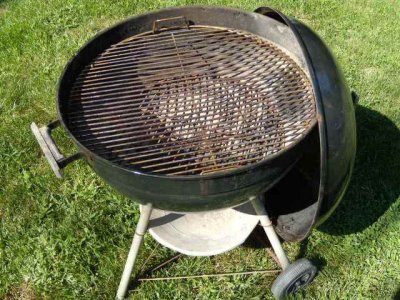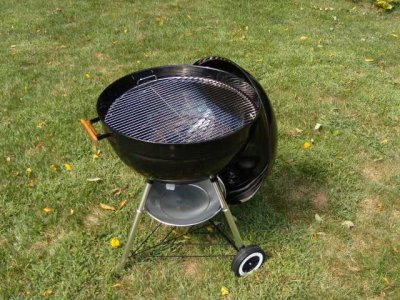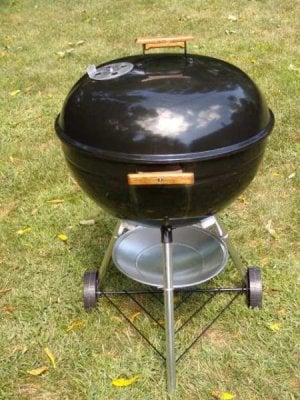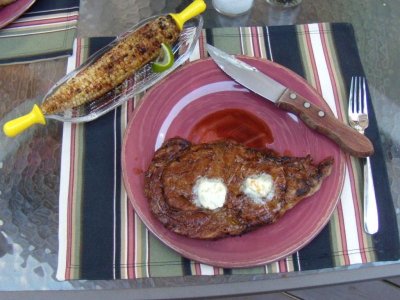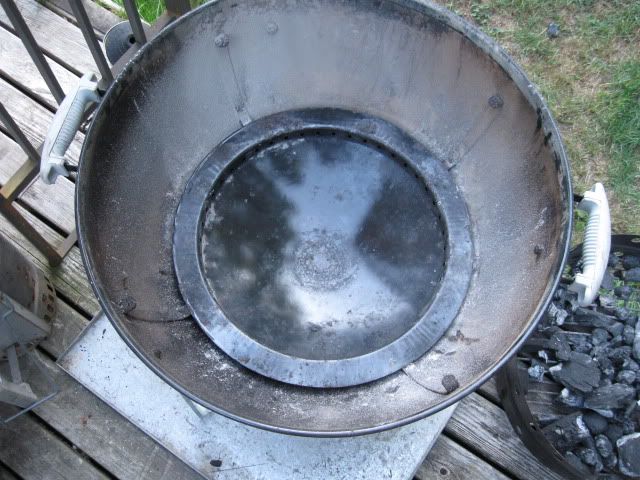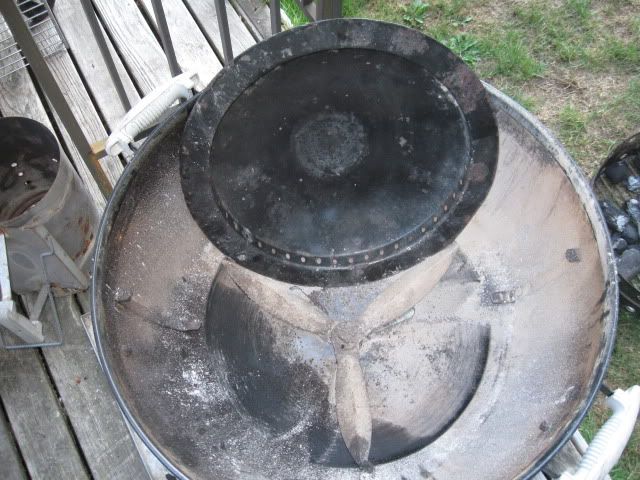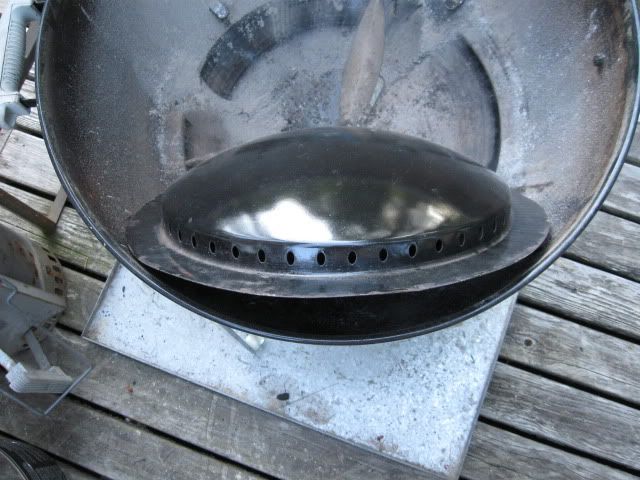DaveMW
is Blowin Smoke!
The Weber kettle has been completed! Below are some before and after photos. I will make a second post that contains any knowledge that I received from all of you <thank you very much>. I will also list the things that I tried both for better or worse and what I would do going forward. Yes I did say forward. Last night when I told my wife that I had finished the grill she said "that's great, but you have enjoyed working on it so much it is a shame that it is done." Then she proceeded to ask if I had checked CL for any for sale in our area & that she could see me buying them, restoring them and the reselling them. Well that is all I need to hear. I'll put any money toward a smoker. I would welcome feedback either positive or negative as to what I might have done better. Keep in mind the photos are from a distance and admittedly if you were right over the grill the spots that were previously rusted can be detected by a difference in the sheen of the paint vs. the enamel that Weber uses and in some cases a dimple where the enamel was chipped. Thanks again for all the help and encouragement.

